
These easy guitar chords for beginner players will unlock the ability to play countless popular songs. They’re all open chords, which means you don’t have to press down on all six strings. Open chords are simple, comfortable, and the perfect foundation for learning guitar.
Of course, even the easiest chords take practice. The real challenge is switching between them smoothly. Changing chords quickly is one of the most important skills in guitar playing. With consistent practice, you’ll be strumming songs in no time. Let’s tune up and dive into the five best beginner chords!
Em (E minor)
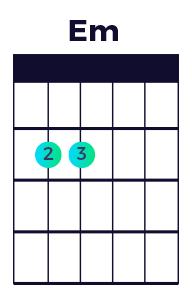
This is one of the easiest chords ever. It only involves two fingers and no uncomfortable stretches. To play Em, place your middle finger on the fifth string second fret and your ring finger on the fourth string second fret. This chord is played from the sixth string down. In other words, all the strings are played, with the bass of the chord being the low E. A very easy and quite popular chord used on countless songs.
C (C major)
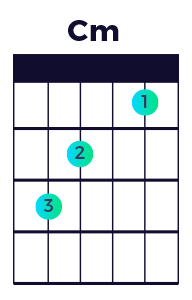
The C chord is often the one most guitar players learn first. The reason it is not at the top of this list is because it involves three fingers, as opposed to Em two fingers. This is not to say that C is a hard chord, quite the contrary. It is another easy chord.
To play it, place your index finger on the second string first fret. Then place your middle finger on the fourth string second fret and ring finger on the fifth string third fret. C is played from the fifth string down, so the bass is on the A string.
Am (A minor)
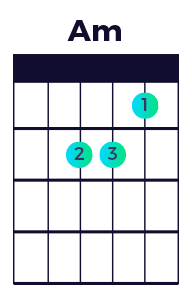
Another beloved and extremely used minor chord! Best of all, Am is quite easy to play. Place your index finger on the second string first fret. Then place your middle finger on the fourth string second fret and ring finger on the third string second fret. This chord is also played from the fifth string down, just like C. Naturally, the bass on Am is the open A string.
Here’s a quick tip to help you tie chords together. The difference between C and Am is just one finger. Practice going from the C to Am. All you have to do is move your ring finger from the fifth string third fret to the fourth string second fret.
Dm (D minor)
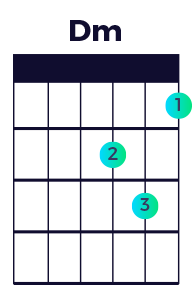
To play Dm, place your index finger on the first string first fret. Then place your middle finger on the fourth string second fret and ring finger on the second string third fret. This chord is played from the fourth string down. In other words, avoid playing the sixth and fifth string on the Dm.
G (G major)
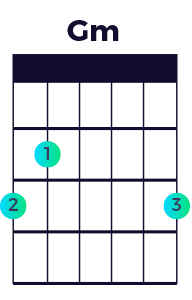
Final Thoughts
Each of these shapes is an easy guitar chord for beginner players, and together they form the backbone of thousands of songs. Practice them daily, focus on smooth chord changes, and soon you’ll be strumming along with your favorite tracks.
To make your learning journey easier, check out Roadie Coach, your personal guitar practice companion. It guides you step by step, helps you track progress, and gives instant feedback as you learn these essential chords.
Start with these five chords, enjoy the process, and most importantly, have fun playing!


